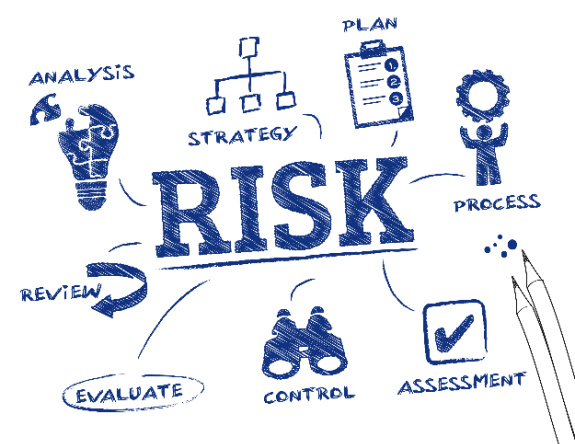How Craft Brewing Risks Evolved The Past Decade

In celebrating their tenth anniversary, Craft Brewing Business uses the opportunity to not only reflect on a lucrative decade for the brewing industry, but a decade of new and emerging products, practices and accompanying risk exposures, and we share their thoughts.
There’s no question that business was booming for brewers over the past ten years. In fact, in 2013, there were 2,822 operating breweries in the U.S. according to data from the Brewers Association. By the end of 2022, that count reached 9,709, including a record 9,552 craft breweries.
Like with any industry, as our businesses have grown, we have seen a wider range of risks emerge and threaten operations.
Prioritizing safety
During periods of growth, business owners tend to focus on strategies to grow their business and find new clients, rather than on monitoring for risk exposures. But, as the craft brewing industry has matured, so have its efforts to embrace a culture of safety.
For example, brewery owners are recognizing the need to hire more seasoned individuals with specific skillsets where they can, to handle the complex safety challenges that breweries face. At the same time, larger organizations are hiring risk managers to develop and implement catastrophe plans and regularly run loss control mitigation practices and loss analyses.
At smaller breweries, such as nanobreweries, we might not see such sophisticated risk management protocols in place. We often see nano brewers who recognize the value of safety but have not dedicated resources to mitigate their risk exposures.
In all, while the industry is making progress in prioritizing safety, more can be done.
Evolving exposures
In 2013, our industry’s most significant risk exposure was likely equipment breakdowns. The bulk of claims came from manufacturing equipment and if one piece was damaged or shut down, the whole process would shut down. We also saw other safety risks, such as forklift accidents, explosions and implosions, boil overs and more.
These risks are still prevalent in the industry, and in some cases the severity of these incidents has increased while the number of claims has decreased. For example, in the wake of supply chain shortages, one broken part can shut down equipment as the supplier navigates supply chain delays, creating a bottleneck that halts the brewing process. The wait to replace parts is so long that we have seen breweries forced to shut down for extended periods of time. We recommend all breweries budget accordingly and have spare parts on hand where possible so that in the event of an equipment breakdown, they can return to brewing quickly.
In addition to equipment breakdown, there are several exposures that have been more common in recent years. The most significant area of growth in claims has been on the liability side. As this industry has grown and with-it unfortunate incidents, customers are becoming more aware of what they can hold businesses liable for.
As a result, we have seen some liability claims rise, including:
Liquor liability: From state to state, liability related to drunk driving varies. Several states do not leave much up for interpretation when it comes to overserving. If a customer has an accident, the brewery can be held liable, with potentially heavy costs on the horizon. To avoid such situations breweries should ensure all employees that serve alcohol are comprehensively trained in how to identify and manage overserved customers.
Employment practices liability: We hear often about employees or owners creating toxic work environments, leading to harassment claims. Management should have a comprehensive employee handbook in place with details regarding company workplace policies, including an equal opportunity statement and employment at-will statement. They should also have a zero-tolerance policy towards discrimination, substance abuse and any harassment.
Other general liability claims: Claims related to slips, trips and falls and other customer injury exposures continue to rise. Brewery staff should constantly be on the lookout for anything patrons can trip over, clean immediately in the event of a spill and ensure the manufacturing area is properly roped off to prevent any customers from potentially injuring themselves.
Where is the industry headed?
While some of these risk exposures like slips, trips and falls are age old and industry agnostic, we are seeing new risk exposures enter the scene as brewers move into the future.
For example, one trend we have seen recently that likely will play a role in the decade to come has been transporting beer across state lines. Some breweries have cult followings across the country and have started mailing their beer across state lines to provide new regions with access to their product.
We expect to see more of the industry trend toward this digital convenience. There are potential exposures involved though. Some states, like New Jersey, do not permit shipping of alcohol across state lines. Any brewery considering mailing their product should ensure they are in compliance with their state laws and the laws of the state they are delivering to.
Before adding on any new technology or programs, brewery owners should be sure to consult with a specialty insurance provider. A specialty provider will know the complex risks facing breweries and can offer comprehensive risk mitigation advice and coverage to prevent those exposures from threatening their business.
People have been making beer for thousands of years. As breweries continue to enhance their product offerings and adjust their brewing processes, it will be important that owners and operators continue to keep safety and risk management in mind.
Attribution: Article Retrieved from Craft Brewing Business, written By Paul Martinez .

Beer CPA – “We Give Craft Breweries More Freedom and Peace of Mind”
A Craft Brewery CPA Firm that’s Tech Savvy, Responsive, and Business Smart.
Photo Credit: Shutterstock



